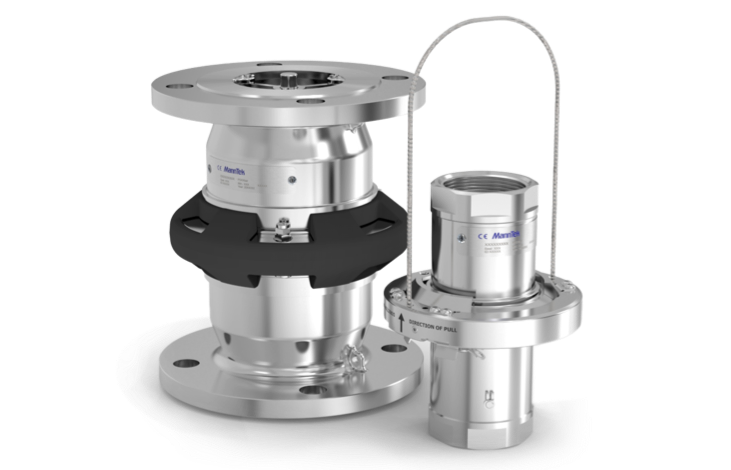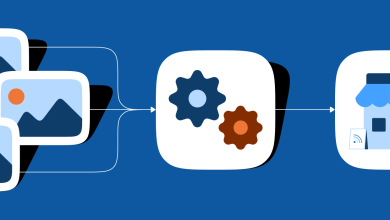What are Marine Breakaway Couplings?

Marine breakaway couplings are a vital part of safe and efficient fluid transfer between vessels and offshore platforms. They are designed for the marine environment, where conditions can be brutal. This article will explain what marine breakaway couplings are, their applications, and how they prevent oil spills and protect the marine environment. For expert advice, visit breakawaycouplings.com.
What Are Marine Breakaway Couplings?
Marine breakaway couplings, also known as MBCs, are special devices in the hose transfer system that prevent spills and reduce risk during fluid transfer. They will break away under excessive tension or pressure, shutting off the flow to prevent fluid spillage.
How Marine Breakaway Couplings Work
Marine breakaway couplings have two main halves that are locked together during normal operation. In the event of excessive force from vessel movement or a pressure surge, the coupling will break away, seal both ends, and stop the downstream flow immediately. This action prevents an oil spill and environmental pollution from hazardous materials like crude oil.
Marine breakaway couplings are built to withstand harsh operating conditions, with high-strength end connections to ensure secure attachment to hose systems and other transfer equipment.
Marine Breakaway Coupling Features
Auto Disconnect
Marine breakaway couplings will break away when the tension or pressure exceeds safe limits.
Zero Headloss and Low Headloss
Marine breakaway couplings are designed for zero headloss and low headloss.
Environmental Protection
By sealing off both ends when disconnected, marine breakaway couplings prevent oil spills and fluid leaks that can cause environmental pollution and costly clean-up.
Compatible with Many Hoses and Transfer Systems
Marine breakaway couplings are compatible with many hose systems and end connections, so they can be installed across different configurations.
Durability in Marine Conditions
Marine breakaway couplings are corrosion-resistant, saltwater-resistant, and temperature-resistant, making them suitable for use on supply vessels, offshore platforms, and other marine applications.
Marine Breakaway Coupling Applications
Their main purpose is to protect hose transfer systems during ship-to-ship and ship-to-platform transfers, where hose connections are at risk of damage from vessel movement.
Typical Applications:
Crude Oil Transfer
A marine breakaway coupling will stop the flow when subjected to excessive force.
Chemical Transfer
Marine breakaway couplings protect the hose system and surrounding environment by preventing chemical spillage and downstream flow after disconnection.
Fuel Transfer for Offshore Platforms
Marine breakaway couplings are used for fuel transfer between supply vessels and offshore rigs. The coupling will break away and seal off both ends to prevent fuel spillage.
Bunker Fuel Supply
Ship-to-ship fuel transfer operations use marine breakaway couplings. They add an extra layer of protection against spillage during bunker fuel transfer.
Benefits of Marine Breakaway Couplings
Marine breakaway couplings are a trusted solution to prevent oil spills, protect hose transfer systems, and keep crew members safe in the marine environment.
Key Benefits:
Reduced Environmental Pollution
Marine breakaway couplings reduce environmental pollution and protect marine life from hazardous materials.
Increased Safety
These couplings reduce the risk of accidents during ship transfer operations by disconnecting automatically when the transfer system is threatened.
Enhanced Operational Efficiency
Marine breakaway couplings allow flow without compromising system performance.
Cost Savings in Clean-Up and Maintenance
Marine breakaway couplings reduce the cost of spill clean-up, environmental damage, and system repair. They minimise downtime by keeping the system intact.
Maintenance of Marine Breakaway Couplings
Regular checks should focus on:
End Connections and Seals
Check end connections and seals for wear or damage. Worn seals can prevent the coupling from shutting off flow in an emergency.
Internal Mechanisms
Check internal components to ensure smooth operation during disconnection. Faulty parts can cause premature activation or failure to activate when needed.
Testing Under Pressure
Testing marine breakaway couplings under simulated operating conditions will prove they will work in real life.
Summary
Marine breakaway couplings are part of the hose transfer system in the marine environment, providing an essential solution to prevent oil spills, reduce environmental pollution, and protect the transfer system.
Gall Thomson has developed marine breakaway coupling technology to meet industry requirements for safety, durability, and operational efficiency, making them a trusted choice. By investing in high-quality marine breakaway couplings, companies can boost their environmental protection, protect their system, and ensure continuous operation.


